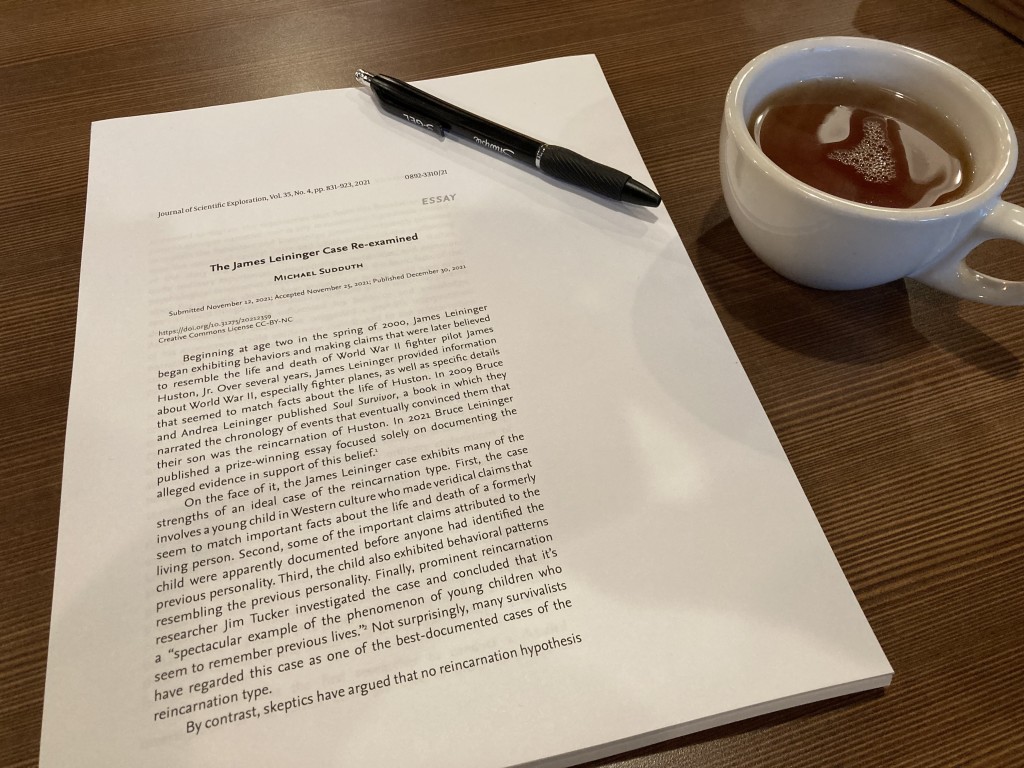The James Leininger Case Re-examined [PDF]
Article Abstract
In “The James Leininger Case Re-examined” (Journal of Scientific Exploration, Vol. 35, No. 4, 2021), I examine an alleged case of reincarnation previously investigated and analyzed by Jim Tucker, M.D. The case concerns Louisiana boy James Leininger, originally presented in Bruce and Andrea Leininger’s book Soul Survivor (2009).
The James Leininger Story
Around the time of his second birthday, James Leininger began having nightmares of being trapped in a burning plane. He subsequently provided further details about the ongoing nightmares. He said he was a pilot who flew off a boat. The Japanese shot his plane down, it crashed in the water, and that’s how he died. As his nightmares persisted, James continued to make further claims about WW2, especially details about fighter planes.
James’s parents attempted to verify his claims. Eventually, they determined that his behaviors and claims matched the life of James M. Huston, Jr. Huston was a WW2 fighter pilot killed in action on March 3, 1945. The resemblances to Huston’s life eventually convinced the Leiningers that their son was the reincarnation of Huston.
Jim Tucker investigated the case in 2010, and in subsequent publications he provided a favorable analysis of the case. Other reincarnation researchers have agreed and regard the James Leininger story as a superior American case of the reincarnation type.
My Evaluation
Between 2019 and 2021, I investigated the James Leininger story. My investigation included extensive fact-checking and discussions with over a dozen people familiar with different aspects of the case. In this paper, I present my findings and their implications for the evaluation of the case as evidence for reincarnation. I conclude that the James Leininger story does not provide evidence for reincarnation.
The favorable assessment of the case depends on the assumption that the official narrative is robust and credible. I argue that the chronology of events that provides the factual scaffolding of this case is neither robust nor credible. This is especially true with respect to what are allegedly the case’s strongest features.
- The narrative is not robust. It excludes salient contextual details about James’s exposure to ordinary sources of information. These sources, including videos and museum visits, plausibly shaped James’s experiences and informed his claims and behaviors. And the official chronology of events doesn’t clearly track how the Leiningers inadvertently introduced sources of information as part of the process of verifying James’s claims.
- The narrative is also not credible. The presumed facts of the case depend on the testimony of Bruce and Andrea Leininger, but their testimony is unreliable. They’ve presented multiple iterations of their story with incompatible accounts of what James said and when he said it. Their story involves suspicious narrative redactions, fact fudging, and a suppression of facts that disconfirm crucial aspects of their story. They’ve also failed to detect James’s exposure to many important ordinary sources of information which plausibly influenced him.
These two defects – lack of narrative robustness and credibility – also vitiate Jim Tucker’s investigation and presentation of the case. Consequently, his favorable assessment of the case as evidence for reincarnation is unwarranted.

 Follow
Follow